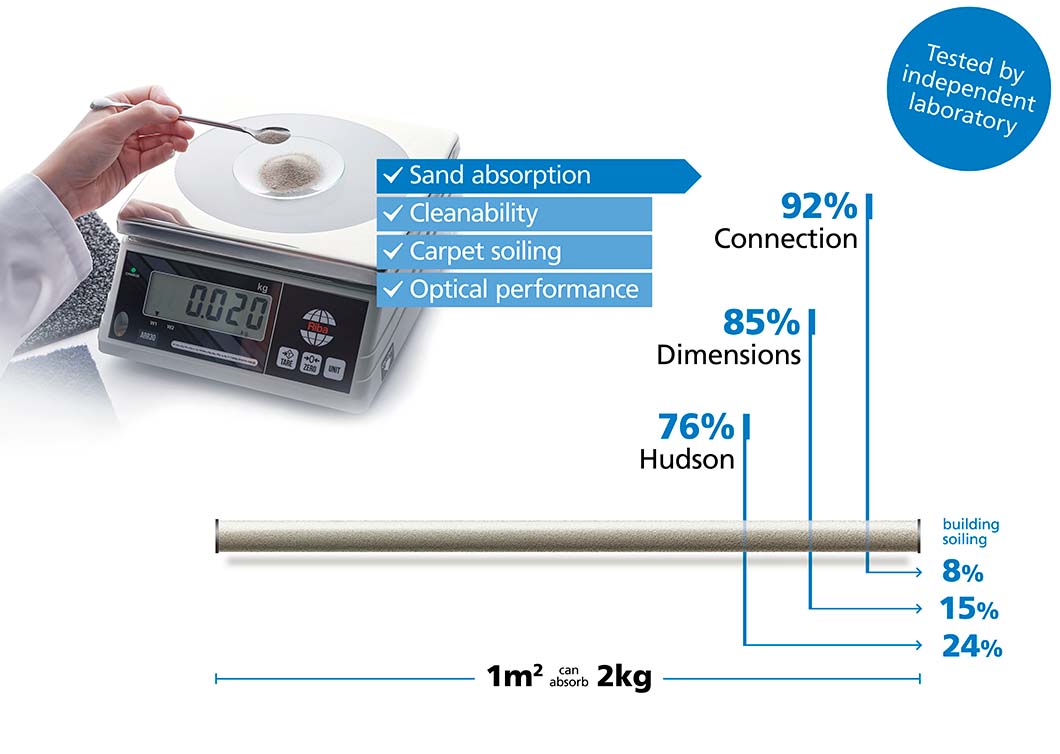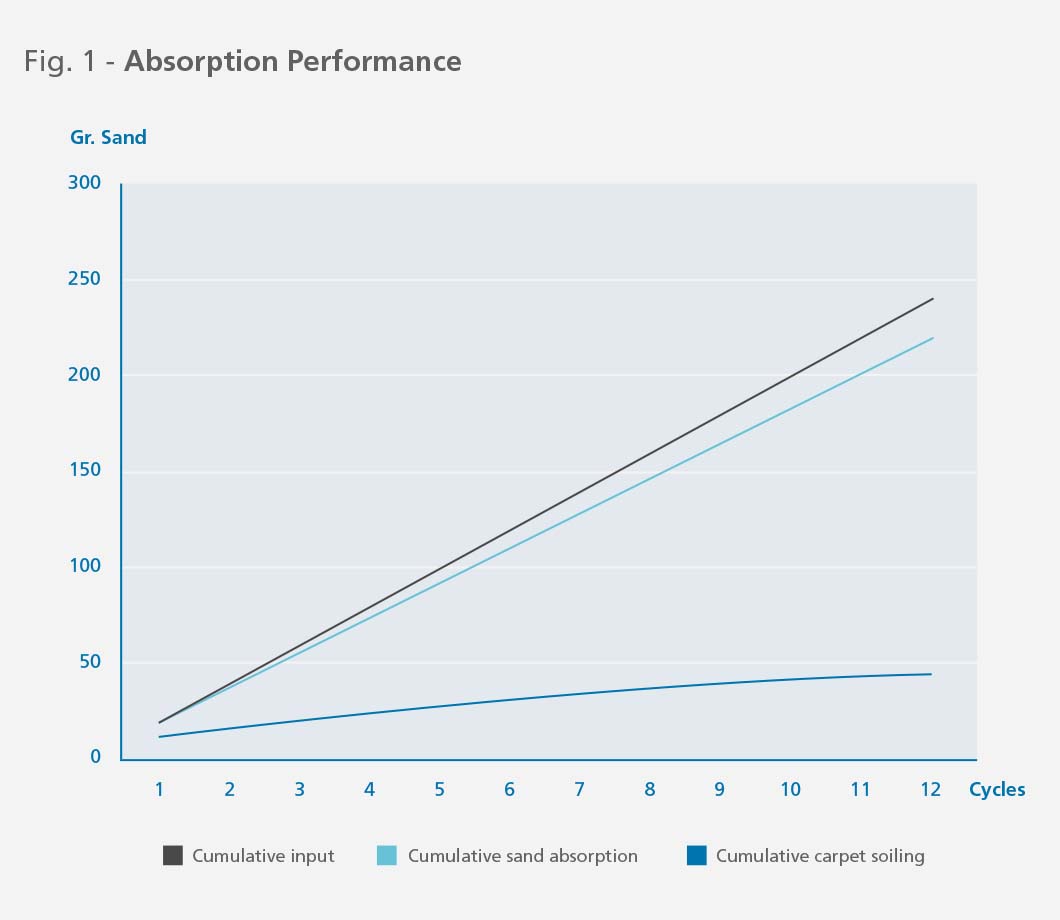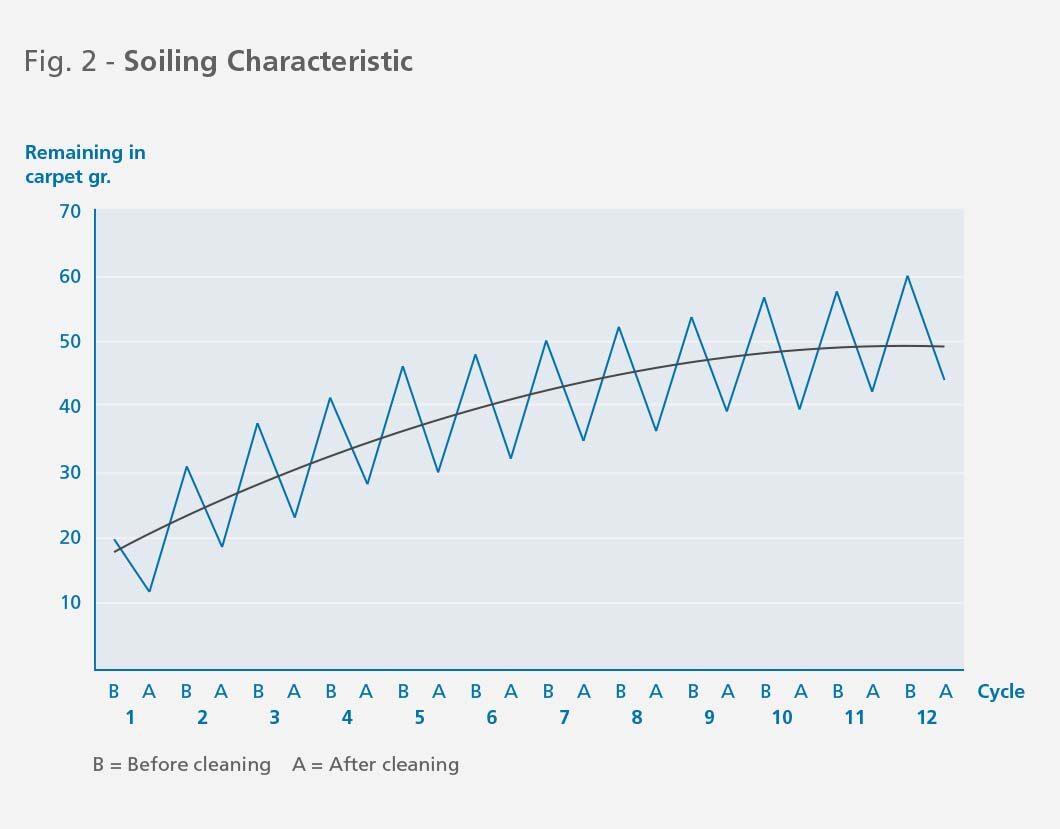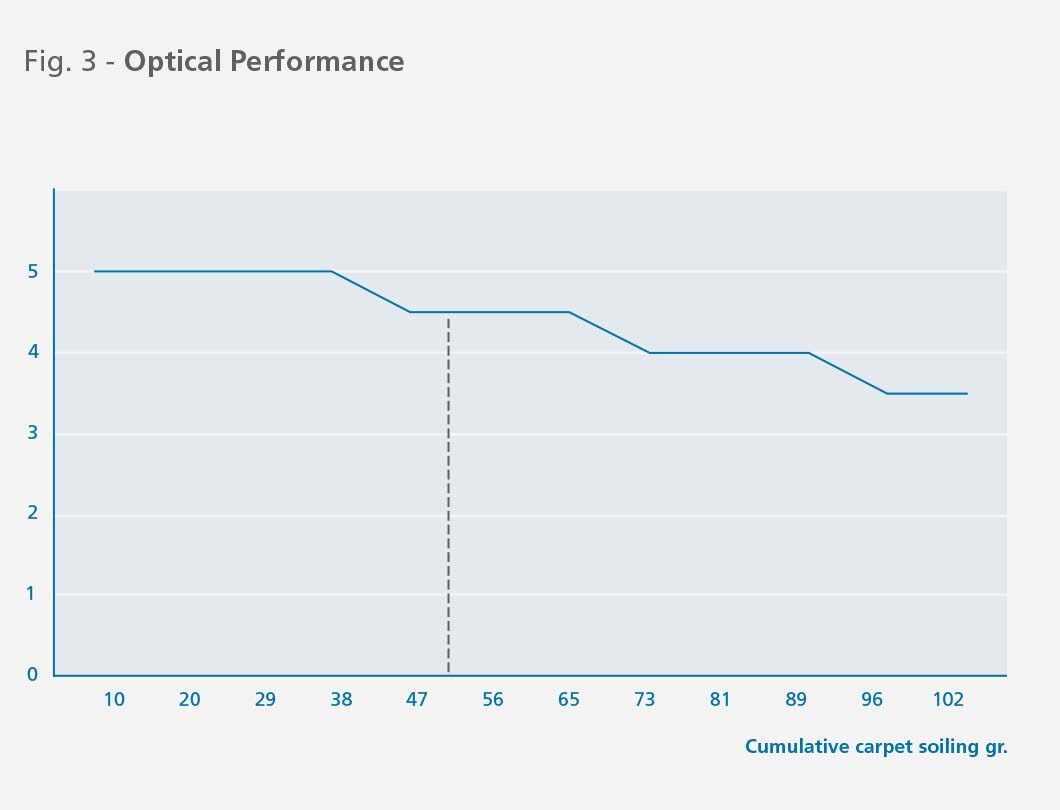 Quality differences between walk-off entrance mats are often difficult to see. Nevertheless, at Rinos we know exactly how much sand and dirt each type of mat captures – sand and dirt that would otherwise have been be walked inside. And how do we know this? By measuring mat performance!
Quality differences between walk-off entrance mats are often difficult to see. Nevertheless, at Rinos we know exactly how much sand and dirt each type of mat captures – sand and dirt that would otherwise have been be walked inside. And how do we know this? By measuring mat performance!
Rinos knows the performance of every mat it manufactures. We developed our own measurement method, which consists of four simple criteria. These criteria will help you decide which type of walk-in mat is suitable for which location. Which allows you to recommend the right options to architects, specifiers and installers.
Sand absorption
In principle, a walk-in mat that is cleaned regularly can scrape off as much as two kilos of sand per square metre, before the mat is completely saturated (Figure 1). In practice, however, a mat takes up a maximum of between 70 and 95% of that amount.
Sand not absorbed by the mat ends up in the building – as building contamination. Higher sand absorption performance means lower levels of building contamination.
Our specification table divides sand absorption scores into 3 performance categories:
- less than 80%
- between 80 and 90%
- 90% or more

Cleanability
This value indicates how effectively a mat can be cleaned using a vacuum cleaner. Common values are between 50 and 85% of the dirt in the mat. The rest of the dirt remains in the mat (see Figure 1). As remaining sand accumulates in the mat, wear increases. Grains of sand are sharp and they damage the pile over time.
Permanent contamination
Sand that accumulates in the mat after vacuum cleaning (assuming it’s done regularly) causes the mat to eventually reach a saturation point. The blue line in Figure 2 shows how much sand the mat contains before and after each vacuuming. The black line indicates the average amount of sand left in the mat after successive rounds of vacuuming.

Visible contamination
A mat does not look its best when it contains a lot of sand. We have divided visible dirt, from spotlessly clean to complete dirt saturation, into categories numbered 1 to 5, where 5 is the cleanest.
If we then go back to Figure 2, we see in this example that saturation level is 50 grams. In Figure 3, the visible soiling of this product is 4.5 out of 5 at 50 grams. This is a very good result: when the saturation level is reached, virtually no sand can be seen on the mat.

Of these four criteria, two are very important: sand absorption and visible contamination. These criteria are always mentioned in our specification tables.
These criteria enable us to both control our production quality and fine-tune the desired product characteristics. Which, in turn, enables ongoing product improvement.
